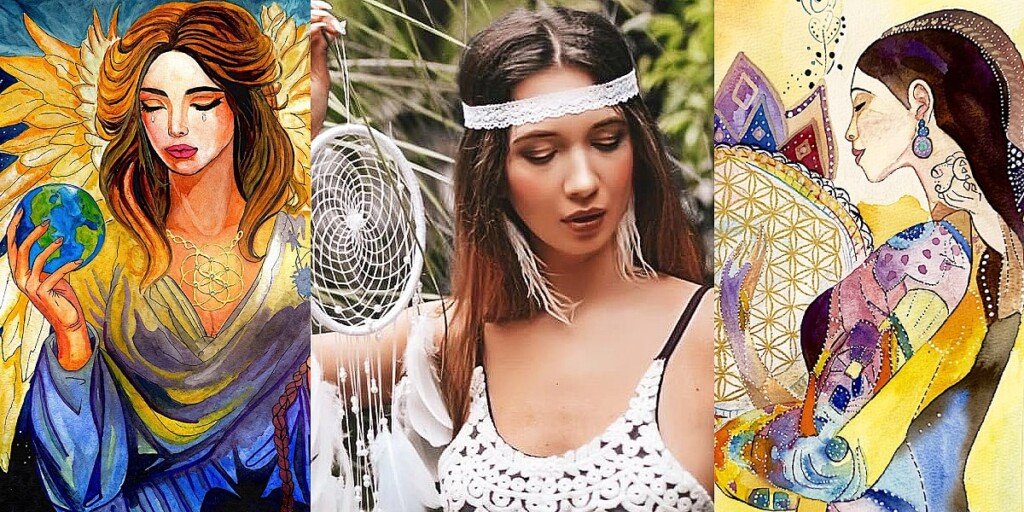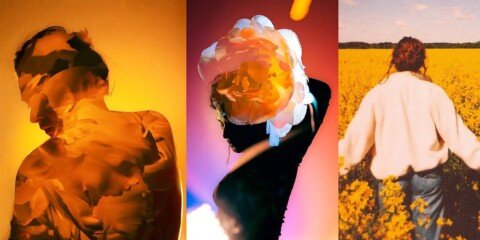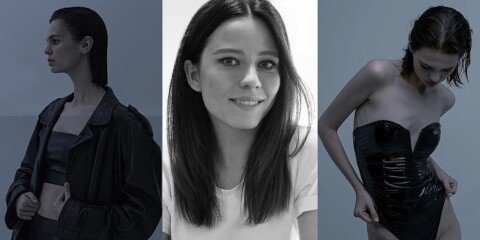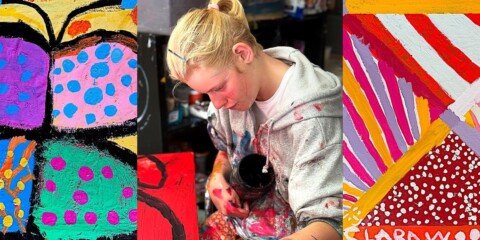Welcome to the otherworldly realm of artist Yulia Ramosh (@yuliaramosh). Here, mere observation is insufficient to grasp the essence of art. Yulia is a modern surrealist alchemist. Her abstract work blends spirituality. Each piece becomes an intimate exploration of the hidden world. For her, art is a healing process. It is a way of seeking spirituality. It is also a sacred instrument for transformation. This pathway was discovered through profound personal experience.
Each piece is a unique creation, imbued with symbolic emotional resonance and an energy that converses with the soul. Early mandalas that she painted to attract love are testimonies to her belief. Her most recent collection, Divine Divas, also reflects her belief. She believes art is a powerful means of manifesting intention and bridging physical and spiritual realities.
Read this exclusive art interview. It allows you to become fully immersed in Yulia Ramosh’s world. She reflects on the deeper meaning of art and its ability to bridge the physical and spiritual realms.

🟥 Can you share a bit about your background and the journey that led you to becoming an artist?
For me, this is one of the most profound and emotional questions, because my path to art has been both ordinary on the surface and deeply unconventional in its essence.
To truly understand it, I must begin from the very start. I grew up in an environment where emotional awareness wasn’t nurtured. As a child, I didn’t know what feelings were, or how to listen to them. Life felt like a fog — I was closed off, confused, and unaware. I lived in that haze until the age of 29, when everything began to change through the practice of self-discovery.
I started listening to daily meditations. And during one of them, I had a powerful vision: I saw myself painting strange, mystical symbols — a pyramid, an eye, the sun. I was holding a brush, standing in front of a canvas. I thought: “This is impossible. Me? Painting?” But something awakened in me. It was as if I had finally opened my eyes.
Suddenly, I was asking myself, “Who am I? What do I want? What is my gift?” And the first answer that rose from within was simple, yet deeply human: I want to be loved. I had experienced such a long and painful loneliness, and I longed for connection, for family, for something sacred.
One day, I felt a strong urge to learn mehndi — the art of henna. It seemed random, but something in the ornamental beauty of those patterns called to me. Through mehndi, I discovered the lotus symbol — and with it, the realization that this wasn’t “just a flower,” but a symbol of divine rebirth. My heart responded with overwhelming emotion.
I began exploring sacred geometry, and that led me to mandalas. When I discovered that mandalas weren’t just decorative circles — but tools for healing and transformation — it was like life handed me a lifeline. I started drawing every day, mostly about love, about calling in a soul connection. I shared these pieces with people close to me, and they began asking for their own mandalas. That’s how my journey as an artist began — with a pencil in hand, then with gouache and color, and always with meaning.
Art became my prayer, my therapy, my rebirth.
In the past, I experienced many painful challenges — moments of confusion, darkness, and situations where it felt like there was no way out. The only thing that kept me grounded was my personal philosophy and spiritual practices. I had to pull myself out, slowly, step by step.
I often painted in solitude, and while art offered a sense of comfort, I deeply longed for connection. In one of those quiet moments, I made a decision: I would paint mandalas infused with the intention of love. I wanted them to help me attract the people my soul was yearning for.
Not long after, something beautiful happened — I met the man who would become my husband. It wasn’t just a coincidence. I truly believe that the sacred symbols I created, combined with my deep emotional focus, helped manifest this shift. It was art, energy, and intention working in harmony.
At heart, I’m a philosopher. I believe in higher forces, energy, and the subtle signs the universe sends us. My art is a way of communicating with that unseen world — a way to heal, attract, and express the sacred through beauty.
After I got married, it was as if time in my art stood still. In that moment, I felt I had fulfilled my dream — I was no longer alone. A deep part of me thought: perhaps I’m not an artist after all. And so, I left it behind.
My desire shifted — I began searching for my true calling. But strangely, painting didn’t feel like the answer at the time. I explored many paths, yet the word “artist” didn’t come to mind.
Then my daughter was born — a beautiful moment that was soon followed by a deep emotional crisis, triggered by old wounds and unhealed trauma. I found myself in a very dark mental space, bordering on psychotic episodes. I had no choice but to seek professional help.
Now, after three years of intensive therapy, the fog has begun to lift. My mind and heart are slowly finding balance again. Along this healing journey, I was drawn — almost magnetically — back to psychology, to therapy, and especially to art therapy. I remembered my beloved mandalas, and one day, I picked up a pencil again.
But this time, I wasn’t just drawing patterns. I began to consciously explore and depict the symbols of sacred geometry— the universal language of harmony, order, and healing.
Then something unexpected began to happen.
Night portals started to open. Dreams turned into vivid visions. Sleepless nights became gateways to knowledge — not from books, but from somewhere far beyond. I began to receive insights about the origins of existence itself — how the universe was created, how particles connect, and how energy takes form. It was both breathtakingly simple and impossibly complex.
A state of hyper-awareness would suddenly flood my being, and I’d open my eyes thinking: What is this? How is this even possible?
What I realized was this:
The more I painted sacred symbols, the more these revelations came. The more I created, the more I remembered — about life, about truth, about myself.
In those moments, I felt a powerful desire — not just to paint, but to share.
To gather people.
To show how mandalas and sacred geometry are not just designs, but living tools for healing and awakening.
I began hosting small art circles and guiding others in how to use symbols to call in clarity, love, balance… to restore inner harmony.
But there was one challenge: I didn’t have the means to promote or advertise. I was lost in how to find people. Once, someone helped me organize a small group session — it was beautiful. But without support, I had to shift to working one-on-one.
Eventually, I stopped the gatherings and focused on creating energetic paintings — visual portals that transmit something deeper.
People often said my art was “very specific” or “not for everyone.” I understood that.
But I wanted to show — these are not just decorative shapes.
They are symbols meant to shift consciousness.
I wanted people to see them with different eyes — psychological, spiritual, emotional.
It hasn’t been easy.
There were many moments I felt unheard… unsure if my work truly reached others. I found myself wondering: What should I do next? Where is the connection I long for?
But I keep going — because this is not just art.
It’s my truth.
It’s my way of remembering and helping others remember, too.
After years of soul-searching and solitary creativity, my husband’s simple words became my guide:
“Just do it for yourself. Paint however you like—everything else will fall into place.”
Those nights, when insomnia struck between 3–4 AM, became my portal hours. Visions and messages flowed in—whispers I took as gifts from higher realms:
“Create, don’t overthink. You must keep making. We’ll handle the rest.”
In late 2024, that inner call led me to the NFT world. By January 2025, I timidly stepped in as a newcomer—my mandalas in hand. Surrounded by so many brilliant artists, I sensed my practice needed evolution. Sacred geometry alone was profound, but I craved something more relatable—something that spoke directly to the heart.
Then the Divine Divas were born. I united the feminine face—timeless archetypes of strength, grace, and wisdom—with ancient geometric codes. Each Diva is a soul-portrait: a sacred symbol given human form, radiating energy, beauty, and spiritual presence.
This collection isn’t just art; it’s a bridge between inner knowing and shared experience. It honors the messages I received in those silent hours and the freedom my husband encouraged. And it invites every woman—and every soul—to recognize the divine archetype living within.
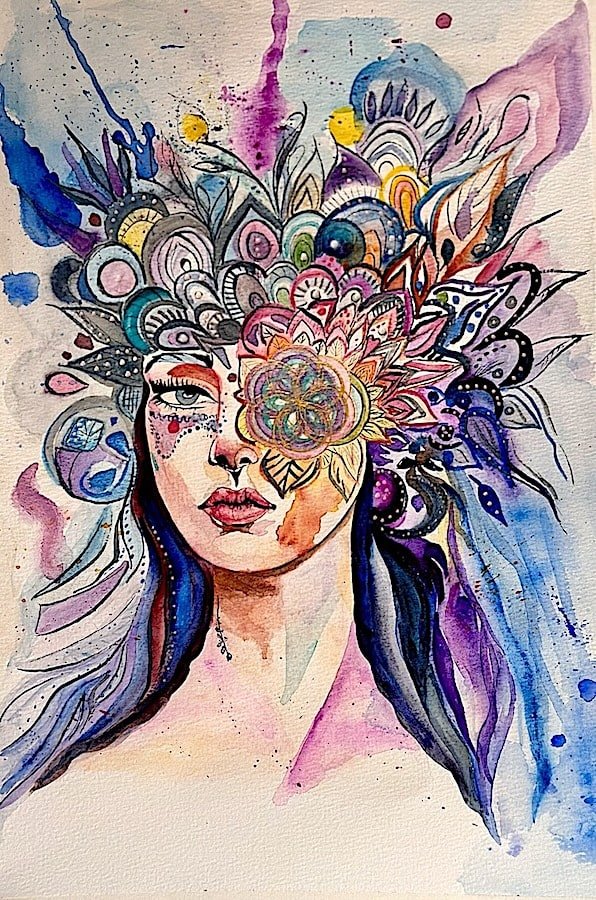
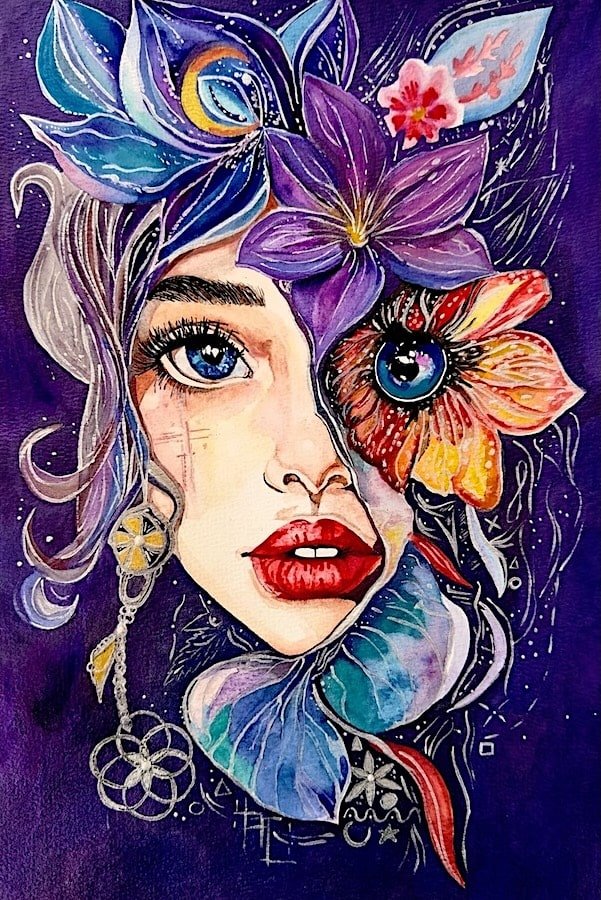
🟥 Was there a defining moment or experience that solidified your decision to pursue art seriously?
Yes — there were several, but one stands out like a turning point.
After years of loneliness, pain, and internal battles, I began drawing mandalas as a way to attract love into my life. I was creating them in solitude, pouring in all my longing for connection — and then, something shifted. Not long after, I met my future husband. It felt like the symbols, the intention, the sacred geometry had truly worked. That moment was the first spark — the first time I realized the transformational power of art.
Later, after the birth of my daughter, I went through a deep psychological crisis rooted in past trauma. Art returned to me as healing. I found myself again through sacred symbols, visions, and sleepless nights filled with messages — as if something higher was guiding me: “Just create. Don’t think. We’ll take care of the rest.”
That was when I knew: this isn’t a hobby, it’s my path. Art became my spiritual language, my medicine, and the bridge between my inner world and the outer one.
🟥 Do you remember the first piece of art you created, and what inspired you to make it?
Yes, I remember it vividly.
It all started with a simple desire to try — to see what it would feel like to draw something beautiful. I was mesmerized by the mystery and tenderness hidden within circular patterns. I began inventing delicate motifs on the spot, guided only by intuition. It was just paper and colored pens — but to me, it felt sacred.
That first mandala was about love and balance, about femininity, serenity, beauty, and a quiet sensuality. It held so much unspoken, unexpressed psychic energy. I remember gifting it to my mother — and to this day, it still hangs in a frame on her wall.
That drawing was more than an experiment.
It was the first moment I felt a connection to myself as an artist — a quiet, yet powerful beginning of everything to come.
🟥 What inspires you the most when creating your art?
What inspires me most is not just an external source — it’s deeply personal.
It’s my experience with sacred symbols, my own life story, the way everything has unfolded, and the insights I’ve received over time. These revelations — sometimes arriving as visions, sometimes as quiet inner knowing — give me a profound understanding of what these images truly mean to me.
What moves me deeply is that these drawings are never just drawings. They are something much more — even beyond what I can fully grasp, or what others might see on the surface.
And there’s one sacred truth I’ve come to witness:
Everything I create tends to manifest — for myself or someone else — often within a few years, sometimes much sooner. My paintings are like messages from beyond — for me and for the person they resonate with.
When someone is drawn to one of my works, I often feel like whispering to them:
“I see a glimpse of what’s coming for you, my dear friend — and it’s real.”
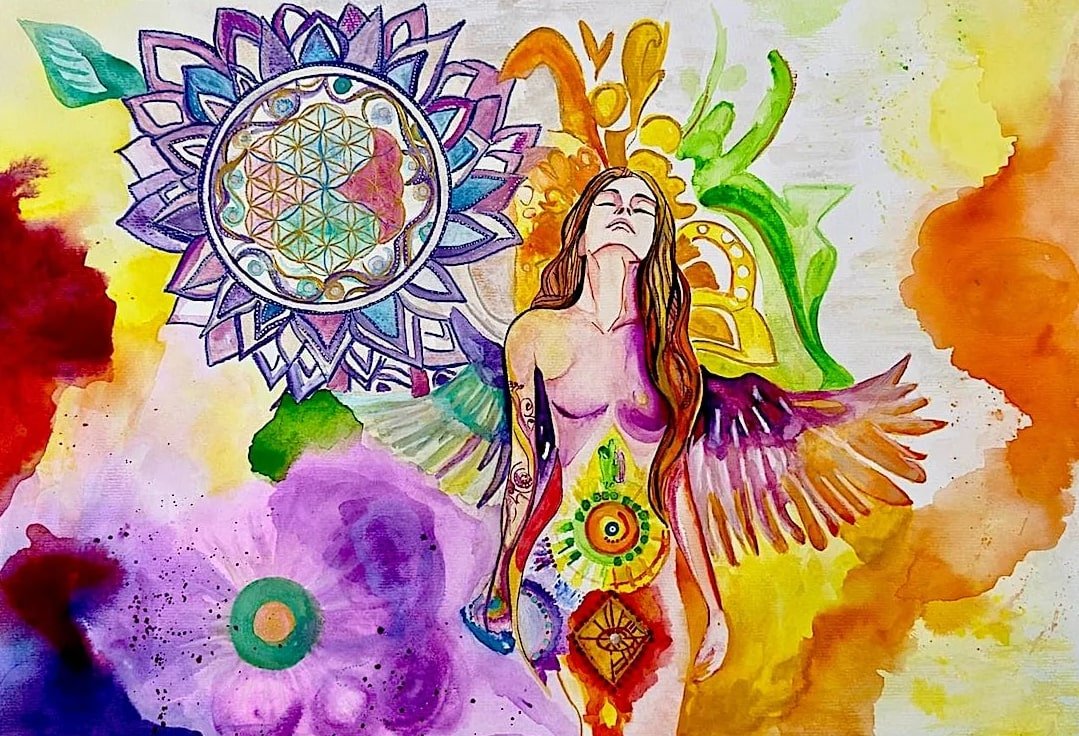
🟥 Are there specific activities, rituals, or moments that fuel your creativity
To be honest, I feel like I carry a powerful current of energy within me — as if I’m the generator itself (laughs). I often feel deeply energized, as though creativity flows through me by its very nature. My greatest activator is me. It’s an inner force that guides me into the birth of my art.
When I’m immersed in the creative process, I can’t stop — truly. My loved ones sometimes tease me, saying, “You’d just sit and paint all day if you could,” and… they’re absolutely right.
I don’t really need special rituals or external triggers to create. The act of creation is already a ritual for me — an organic, unstoppable rhythm that flows straight from within.
🟥 How would you personally define art, and what deeper meaning does it hold for you?
For me, art is both healing and transformation. It’s more than expression — it’s a form of medicine. A true remedy for the soul.
I don’t know if everyone realizes it, but I deeply believe: those who are lost, those who can’t find their voice, those who carry silent pain — they can begin to heal through creation.
Art becomes the mirror of the soul. You take a pencil in your hand, and suddenly it speaks truths you didn’t know how to say. It reveals your wounds, your longing, your essence.
To me, art is not just a practice. It is a sacred act. A path to self-understanding.
It doesn’t hide anything — it reveals everything.
That’s why I can say with full honesty: for me, art is a kind of panacea.
🟥 What part of the creative journey excites you the most—conceiving an idea, the act of creating, or finishing the piece?
Honestly, I feel deeply connected to all three parts of the creative journey—they each hold their own kind of magic.
The beginning always stirs a gentle excitement in me. I often ask myself, what is it I want to express now? This first wave of inspiration never lingers too long; I don’t torment myself over ideas. They arrive quietly and simply, never forced or overly grand. What matters most to me is the spiritual depth behind the piece—whether it’s a subtle warmth or a radiant light, I always aim to infuse meaning, kindness, beauty, and soul into the work.
Then comes the second act—choosing colors and forms—which always brings a deeper emotional engagement. This is where I feel everything. I love working with bold, sparkling, sometimes even clashing colors. I never follow a color wheel—I find that limiting. I choose what my spirit longs for in the moment, even if it’s too sweet or doesn’t “match” at all. That’s something I’m still learning to balance—but I love this part, truly.
And the final moment—when the piece is done—is pure joy for me. I often get mesmerized by what I’ve created. I remember doing this even as a child. I fall in love with my own work over and over again.
People say that artists often dislike their creations or always believe it could’ve been done better. But I’m not one of those artists—I truly love everything I create. I’m my own first and maybe only devoted fan.
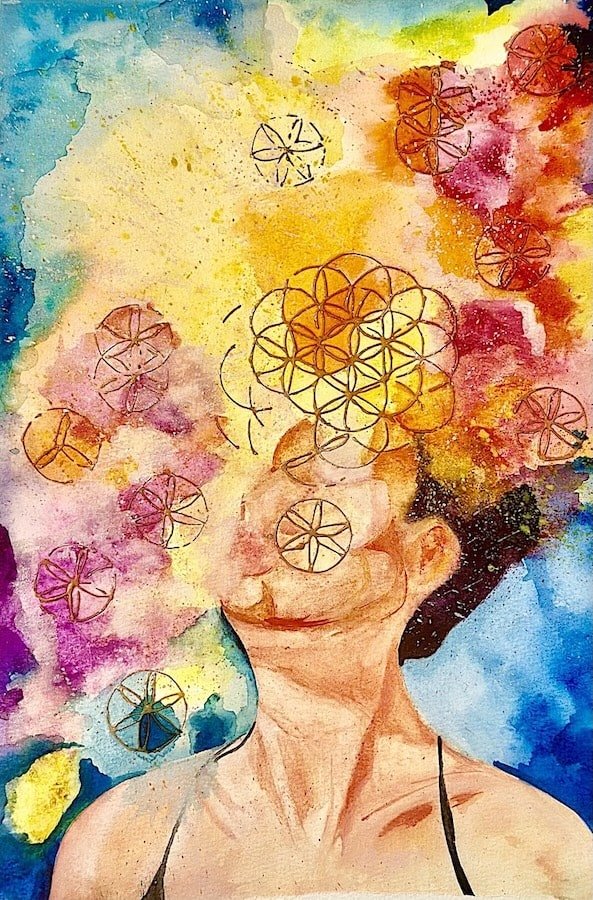
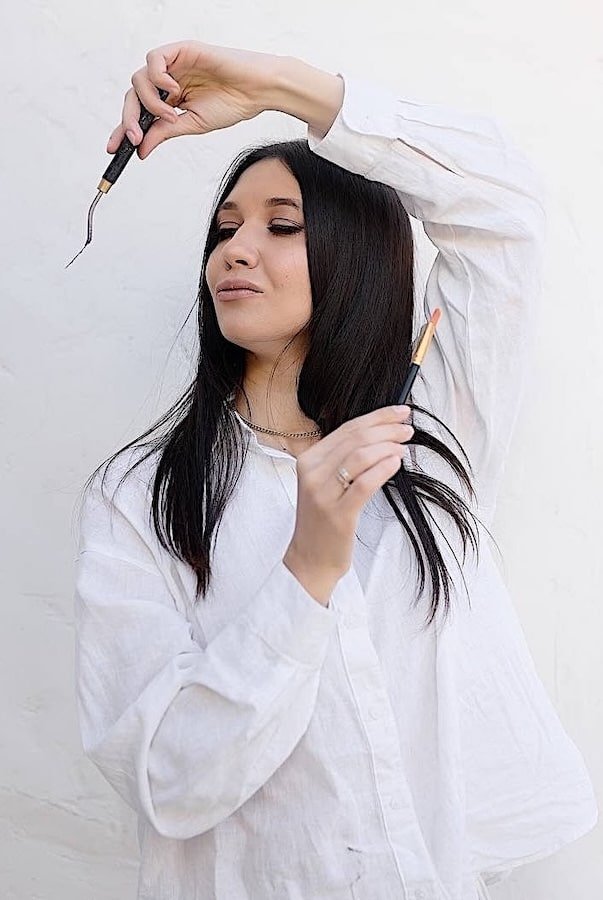
🟥 Do you follow a structured plan when creating art, or is your process more spontaneous?
Honestly, I always intend to follow a plan — in my mind, I dream about building a cohesive, well-structured collection. But then reality kicks in… and I realize, that’s just not who I am.
Oh dear — what collection? (laughs)
One day, I feel pulled to paint a certain image, and the next day I’m already falling in love with an entirely different vision.
I still don’t quite understand how some artists manage to work within one strict style or color palette — to me, that feels limiting, almost lifeless. I thrive on the freedom to shift, to be guided by what inspires me in the moment.
Sometimes I get swept away by the mood of a single color or the feeling behind a specific idea — and that becomes the whole world for that piece. But I rarely stretch that world across multiple works. My process is intuitive, emotional, alive.
Each painting is a new breath, a new rhythm — and I trust where it takes me.
🟥 What time of day do you feel the most creative, and why do you prefer that time for your work?
Honestly, I don’t have a specific time — my creativity lives around the clock. Inspiration can come to me at any hour, day or night. I can paint in the early morning, deep into the night, or right in the middle of everything else.
It might sound a little crazy — and maybe it is. That’s probably why I started a family… to help me stay grounded and remind me to sleep, eat, and occasionally rest from painting. (laughs)
But the truth is, when I’m in the flow, time dissolves. Creation doesn’t follow a clock — it follows the soul.
🟥 Do you listen to music while creating, and how does it influence your process?
Absolutely. Music is an essential companion in my creative flow, and I tend to gravitate toward a very specific type—melodies played on the Arabic flute or the duduk. There’s something ancient and sacred in these sounds… they awaken the feeling that my soul is an old, mythical traveler that has taken residence in a woman’s body.
These Eastern notes feel like an alchemy of sound, spirit, and brushstroke. They speak to something wandering and wistful inside of me—a lonely soul in search of love in all its forms. There is sorrow in the music, yes, but also hope and deep beauty. And most importantly, there’s no violence in it—only tenderness, longing, and a sense of remembering something forgotten.
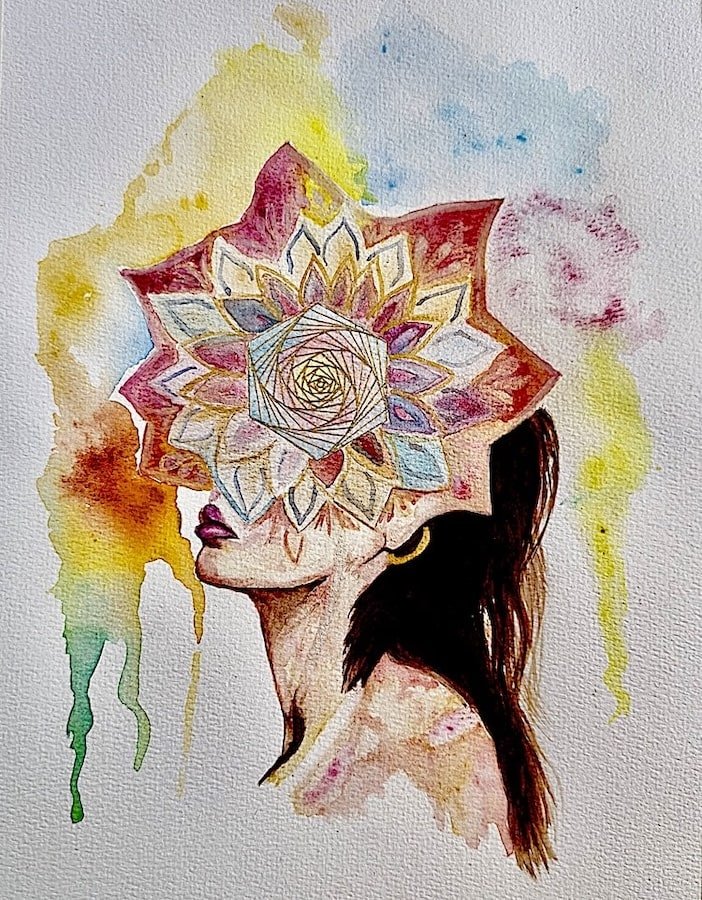
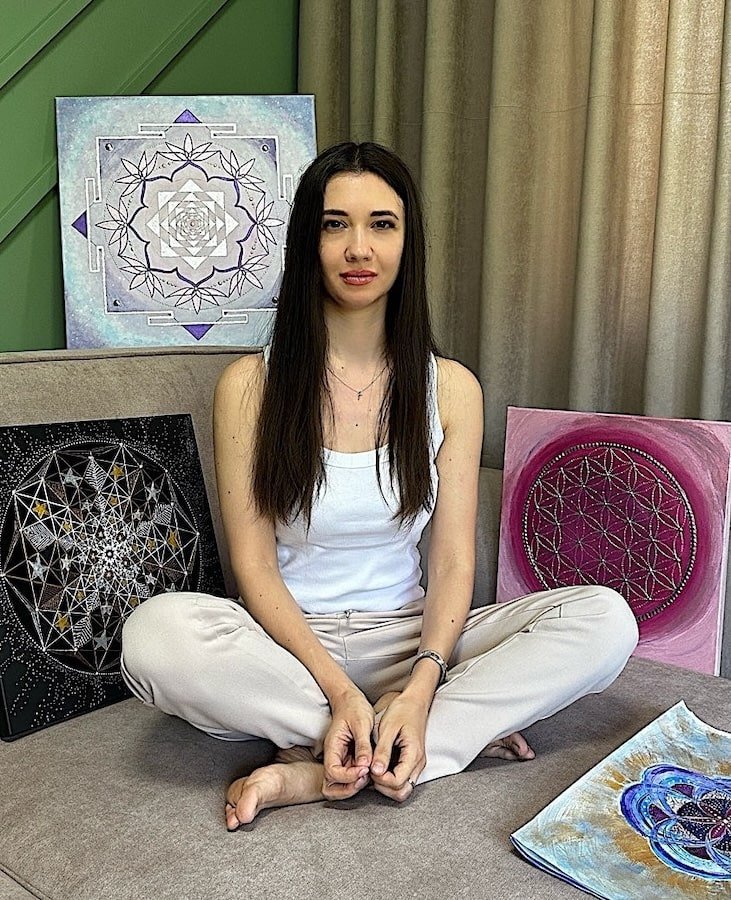
🟥 Do you have any specific rituals or routines you follow before starting a new project?
Absolutely — my main ritual is contemplation. I take time to think deeply before touching the canvas. I envision how the piece will look and feel, whether it will be born through acrylic or watercolor, and which format will best carry its essence.
I reflect on the decorative elements, on the placement of sacred geometry — I love symbols. The more I can embed into the piece, the more joy and meaning I feel. These symbols don’t just enrich the composition visually — they infuse it with spirit.
There’s one detail I always emphasize: the radiant energy of mandalas and sacred signs. That, for me, is the true heartbeat of a work. Ironically, while many might focus on portraying a beautiful female face, I smile — because for me, it’s not about perfect features, but about channeling something far deeper: angelic frequencies, divine codes, and soul-light through every stroke.
🟥 What is the most challenging aspect of creating art, and how do you navigate those?
The most challenging aspect of creating art for me is finding the time to do it—and doing it fast. I don’t like to stretch the creative process over long periods or get caught up in overly meticulous, detailed work. I prefer to work in bursts of inspiration, capturing the energy of the moment while the idea still feels alive and exciting. That’s why I try to approach my art in a way that allows for speed and spontaneity, so I can stay connected to the emotion and avoid burning out.
🟥 What keeps you motivated during times when creativity feels like a struggle?
When creativity feels like a struggle, I remind myself of the journey I’ve already taken. I look back at my past works and reconnect with the energy and meaning behind them. I remember the messages from the angels and the deeper spiritual purpose that drives me. Expressing the spiritual through art isn’t just something I enjoy — it’s my calling. Without it, I feel like I’d lose myself. It’s not optional for me; it’s necessary.
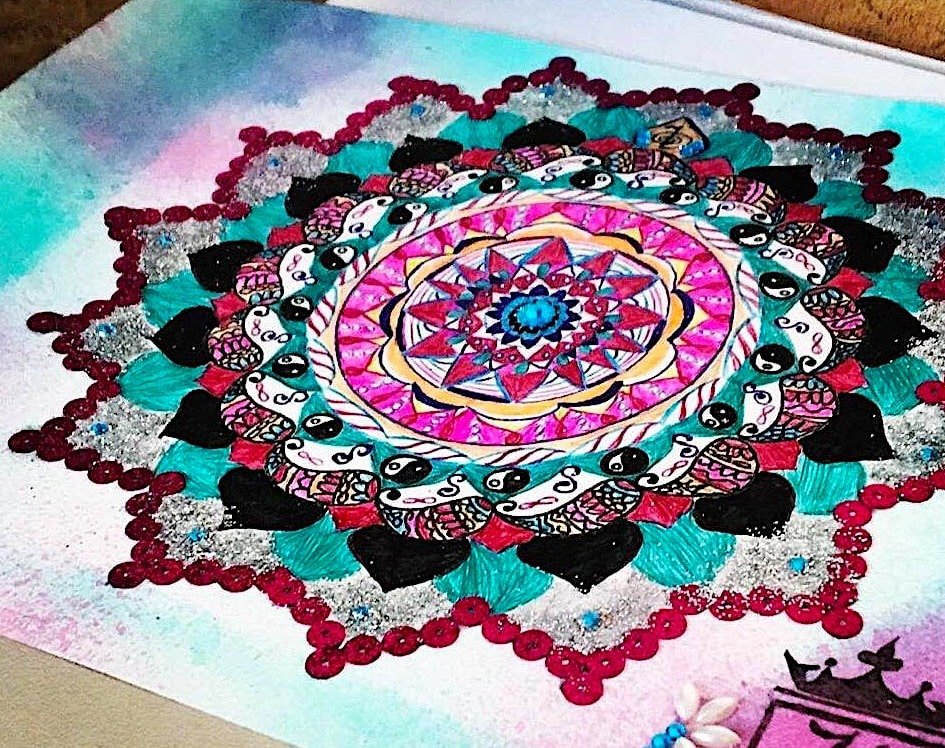
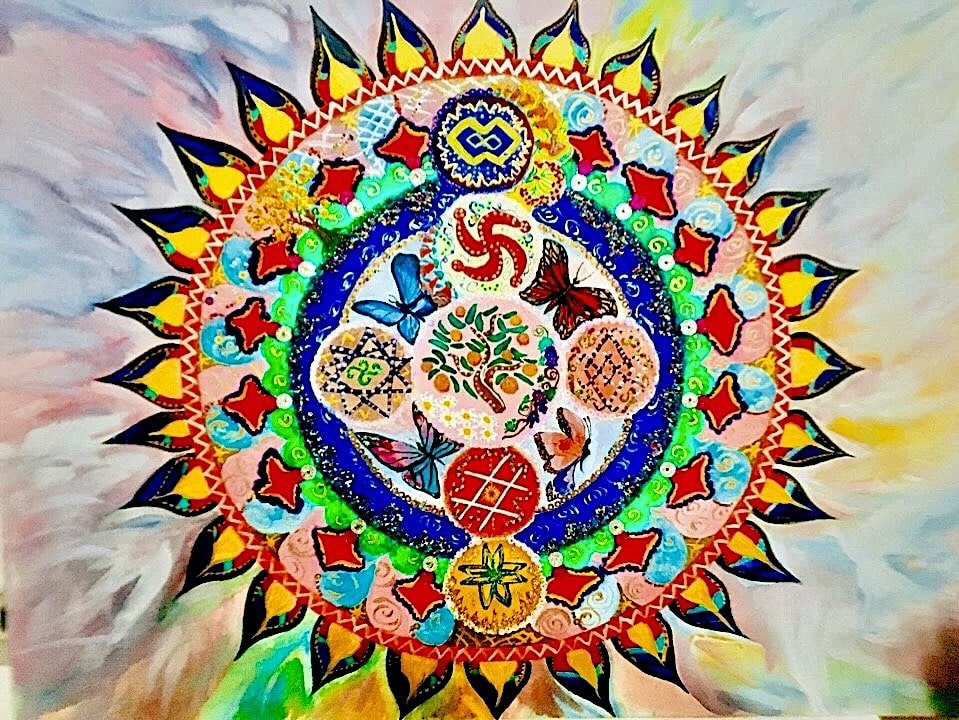
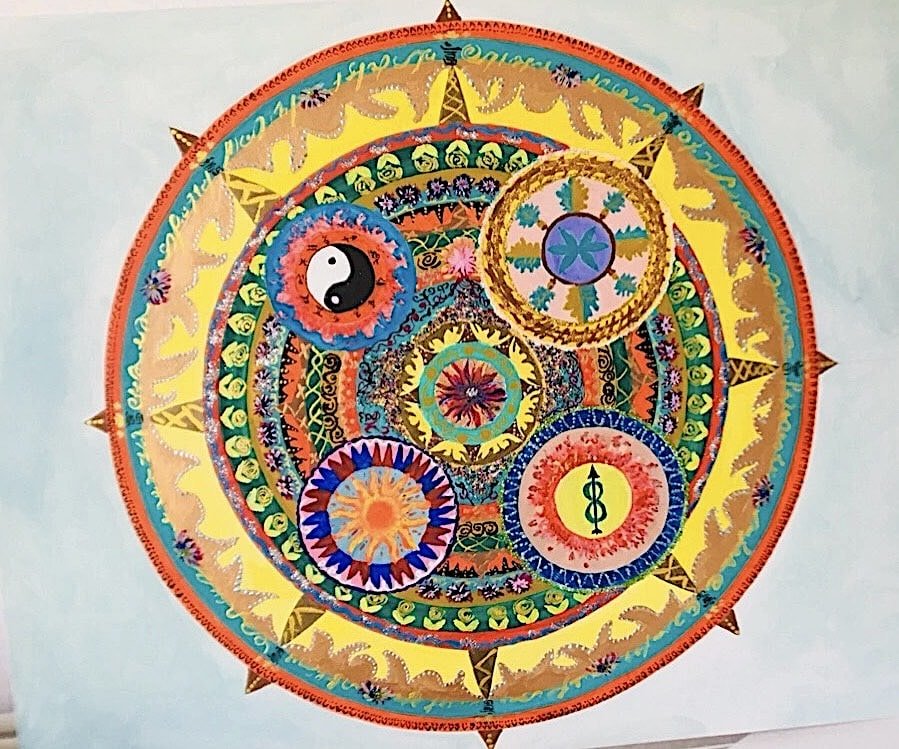
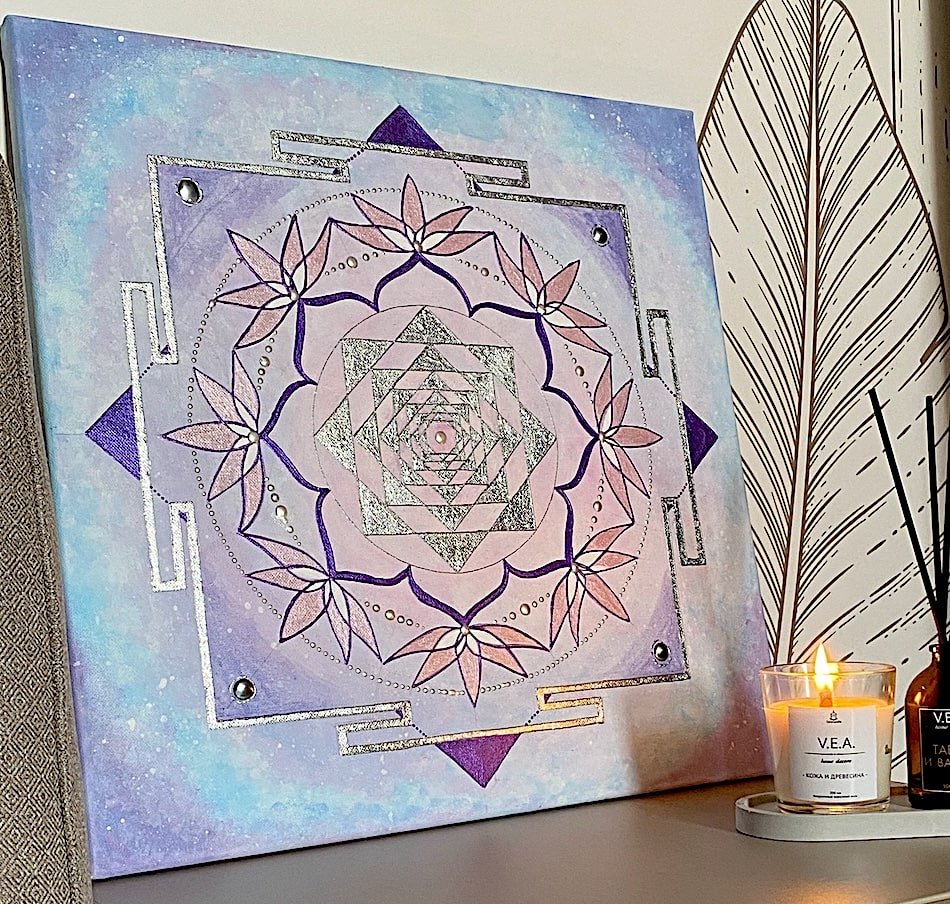
🟥 Can you share an experience or lesson that contributed the most to your growth as an artist?
I can’t say I’ve fully grown as an artist yet — I’m still in the process. But what I can say is that I’ve developed resilience. One of the most important lessons I’ve learned is the value of persistence. Being resilient means continuing even when things feel unclear or difficult. What helps most is understanding why you create. When you truly know what drives you — what inner force leads you — that clarity gives you strength. It keeps you going. It makes you persistent.
🟥 Is there a piece of advice you received that completely changed the way you create or think about art?
One piece of advice — or rather, a realization — that changed the way I think about art was this: create for people, not just for yourself. That shift in perspective helped me see the importance of storytelling, of building a concept, of having a clear idea behind the work. Art becomes more powerful when it’s not only an expression of inner emotion, but a message, a connection, a dialogue with others.
🟥 When you view a piece of art, what qualities or emotions do you look for?
When I view a piece of art, I look for beauty, execution, and idea. The visual harmony catches my eye first — how well it’s made, the composition, the technique. But just as important is the concept behind it. I’m drawn to works that have a clear idea or message — something that speaks beyond the surface.
🟥 How do you perceive art’s purpose and its impact on individuals and society?
I believe the purpose of art is to elevate the mind and soul. It draws us toward beauty, helps us express ourselves without words, and invites us to pause and reflect. Art can be deeply healing — emotionally and psychologically — for both the creator and the viewer. It also connects us to the past, allowing us to see and feel what once was, keeping memory and meaning alive. Art encourages inner growth, sparks thought, and brings moments of stillness in a fast-moving world.
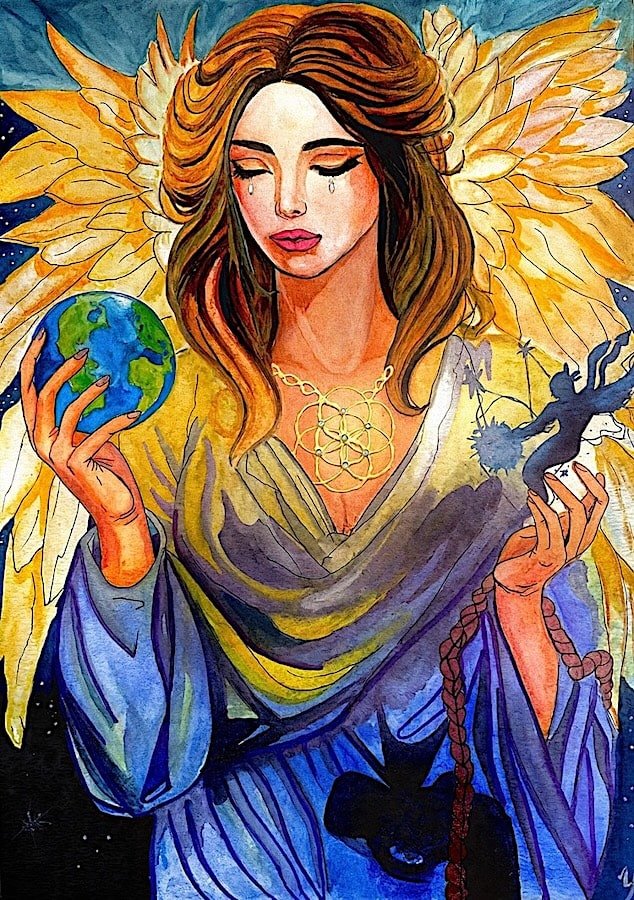
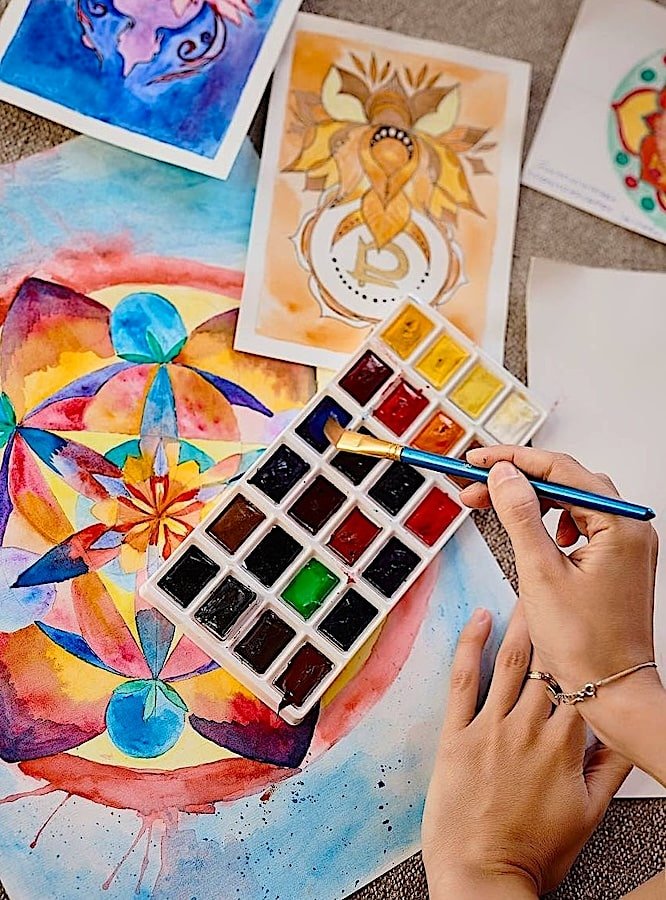
🟥 In your view, what do concepts like “passion” and “uniqueness” represent in art?
In my view, passion and uniqueness in art mean that you’ve opened the right door — the one that leads to your true creative path. When you feel a deep passion for what you do, and you express it in a way that is entirely your own, without repetition or imitation, it’s something truly powerful. That’s when art becomes more than just a form of expression — it becomes a form of genius. For me, passion drives the process, and uniqueness defines the voice. When these two elements come together, they create a space where authenticity and inspiration thrive. That’s where real art is born.
🟥 What are the non-negotiable essentials in your workspace?
The non-negotiable essentials in my workspace are all the tools I need to create freely and fully. That includes the canvas, paints, brushes — the core elements — and also my drawing compass. It’s a small but important tool that allows me to bring precision, geometry, and intentional form into my work. Each object in my studio plays a role in how I express myself, and without them, the process wouldn’t feel complete.
🟥 Do you have a favorite tool or object in your studio that holds sentimental value?
Yes, the objects that hold the most sentimental value for me are my very first and oldest artworks. They remind me where everything started. When I look at my early mandalas, I begin to trace the connections — how my journey unfolded, what I was creating then, and what I’m working on now. I truly believe that nothing happens by accident. Every moment, every step led me to this exact point — to this painting, to this phase of my creative life. Looking at my past work gives me a deep sense of trust in the process. It reminds me that everything is unfolding exactly as it should.
🟥 What’s the one thing you always need by your side while creating art?
The one thing I always need by my side while creating art is the right mood — and time. Without the right emotional state, it’s hard to connect deeply with the process. And without time, I can’t fully immerse myself or let the work unfold naturally. For me, creating art isn’t something I can rush — it requires presence, feeling, and space. When those are in place, everything else follows.
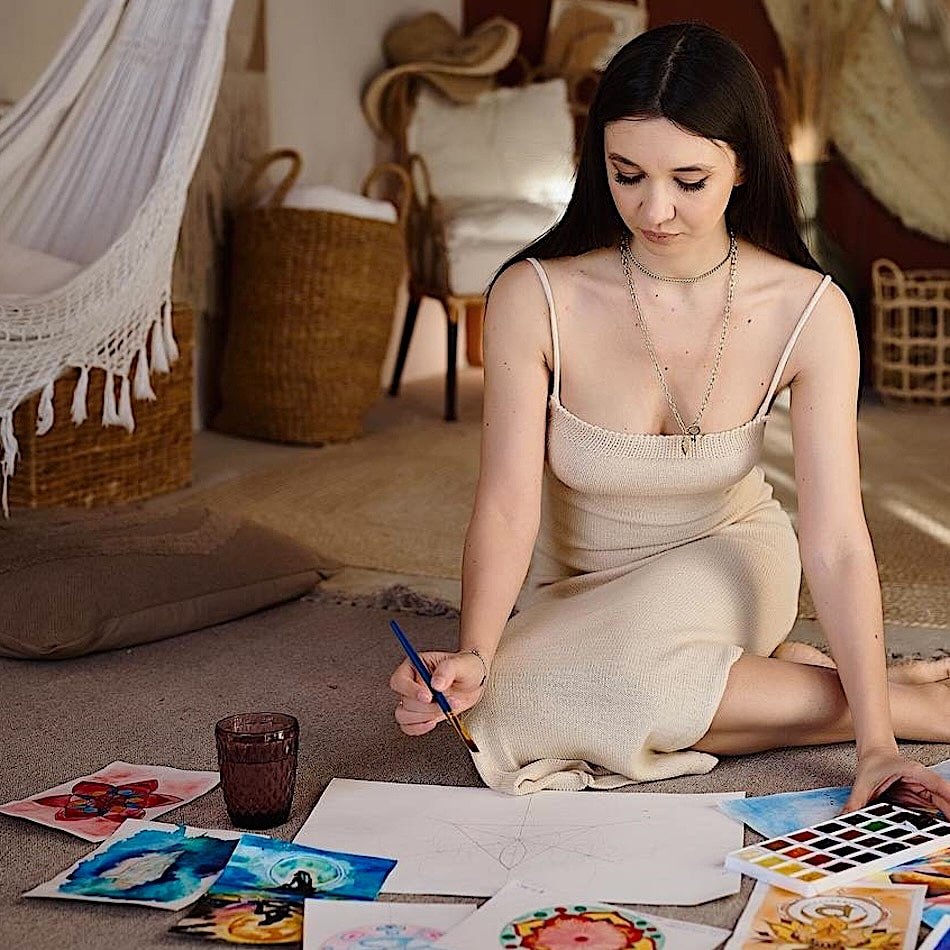
🟥 Who are the artists or people you admire the most, and why?
I’m drawn to artists who explore themes of harmony and spirituality — and I’ve discovered that there are actually many of them out there. I especially appreciate works that feature balanced geometric forms. One artist whose work speaks to me is Elizabeth Fredriksson. Her style blends surrealism and fantasy with elements of graphic design and digital collage. Her pieces often feature animals, abstract human forms, and intricate patterns, creating a mystical, visually compelling atmosphere. I admire how she expresses joy, beauty, and spiritual awakening through her art.
But beyond well-known names, I also have deep admiration for artists who create something wildly imaginative and beautiful — even if no one notices them. I do. I find myself deeply inspired by the beauty in every creative soul. I’m a true fan of people who dedicate themselves to the creative process, no matter what they make. I can often sense what they were feeling in the moment of creation, and to me, that emotional honesty is incredibly valuable. It’s fragile, brave, and profoundly human.
🟥 Imagine you could create a piece of art in collaboration with someone from history. Who would you choose and why?
If I could collaborate with someone from history, it would definitely be Leonardo da Vinci. His approach to detail, observation, and the natural world was incredibly profound. He understood that everything in life is interconnected — a concept that deeply resonates with me. What fascinates me most is how much time he devoted to drawing, exploring sacred symbols, and studying sacred geometry. It wasn’t just artistic curiosity — he was uncovering hidden truths through form and proportion.
Many of his journals include sketches of the Flower of Life — one of the most powerful and mysterious sacred symbols. I would love to create a piece with him that bridges our shared fascination with geometry, symbolism, and the deeper patterns behind life. I believe we would speak the same visual language, one that transcends time and logic.
🟥 What’s your superpower?
My superpower is the deep inner knowledge that when I truly want something — I find a way to make it happen. It’s a mix of persistence, quiet determination, and trust in the process. I’d also say kindness and support are part of my strength. I believe in lifting others up, and I know how powerful it can be just to show up with compassion. It’s hard to define one exact thing, but I think my superpower is the way I hold onto vision — with both heart and patience.
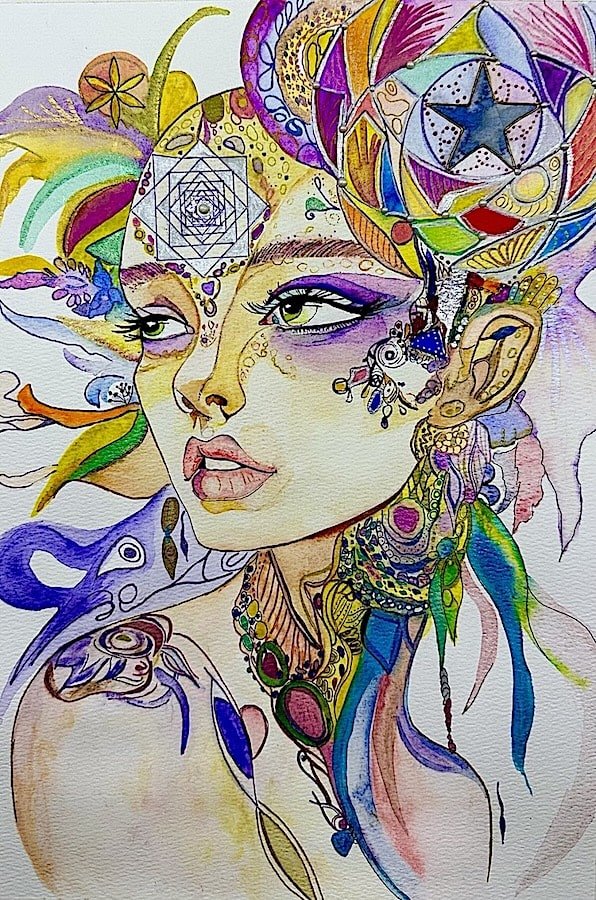
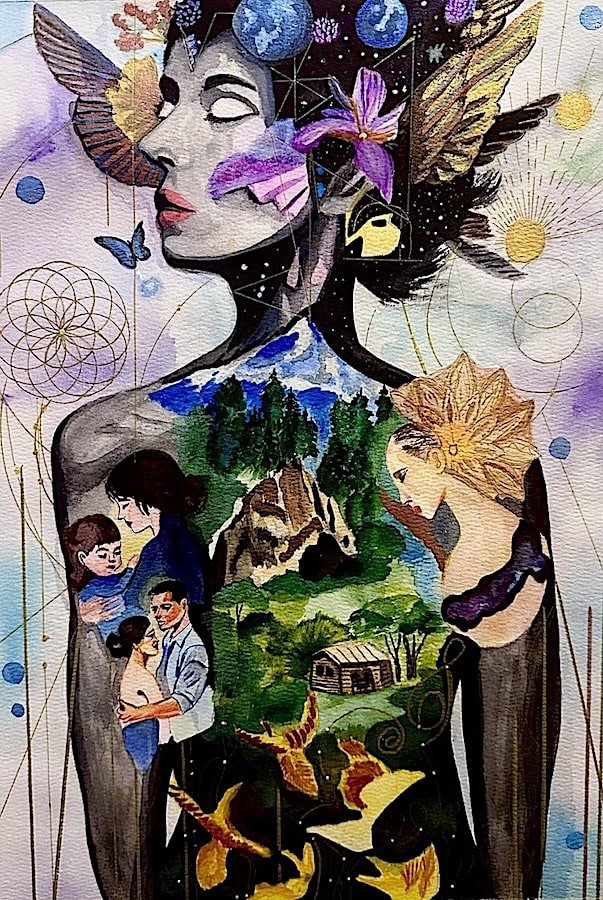
🟥 What does success as an artist mean to you—recognition, impact, or something else entirely?
Success as an artist, for me, means creating something that touches people deeply. Yes, recognition matters to me — not in the sense of fame, but in the way someone looks at my work and says, “This is beautiful, I’d love to have it on my wall, I want to keep looking at it.” When someone feels something warm, emotional, or personal while looking at my art — that’s the highest form of success. I want my work to connect with the heart, to bring beauty, peace, or inspiration into someone’s life. That kind of impact — quiet, honest, and emotional — is what I strive for.
🟥 Can you tell us about a piece of your art that holds a special place in your heart and why it’s so meaningful to you?
Yes, there is one piece that holds a very special place in my heart. It was painted in watercolor during a time of deep personal transformation. I was in a moment of uncertainty — I wanted to express something sacred and spiritual, not just through a mandala, but by creating a feminine image, something entirely new for me. I wasn’t sure if I could do it, or if I would be able to carry that spiritual depth into the work.
At first, the piece simply felt beautiful and interesting to me. But later, I saw something much deeper — what I now recognize as a digital code. That discovery was shocking. I had been going through a strong emotional experience at the time, knowing I was a sacred artist, but unsure how to evolve or present myself. Suddenly, I noticed a number in the artwork — 203 — appearing throughout the painting. It felt like a message. I had studied numerology before and was aware of angel numbers, so I looked it up.
To my amazement, the interpretation of 203 was something like: “You are receiving a message from the angels — don’t be afraid, create freely, and trust your path.” I can’t even describe what that moment did to my heart and my mind. I cried. It felt like a sacred message sent just for me — a confirmation that I was on the right path. That piece became a turning point in my journey, and I still consider it one of the most sacred and meaningful artworks I’ve ever created.
🟥 What are your dreams or goals for the future?
My goals for the future are to continue creating work that feels truly powerful and meaningful — something that resonates deeply and inspires. I dream of having more opportunities to express myself, to be seen and to expand both creatively and professionally. I want to grow as an artist, to experience more creative victories, and to reach wider audiences. For me, it’s all about expansion — in vision, in impact, and in connection with others. I believe the more we grow from within, the more we can share with the world.
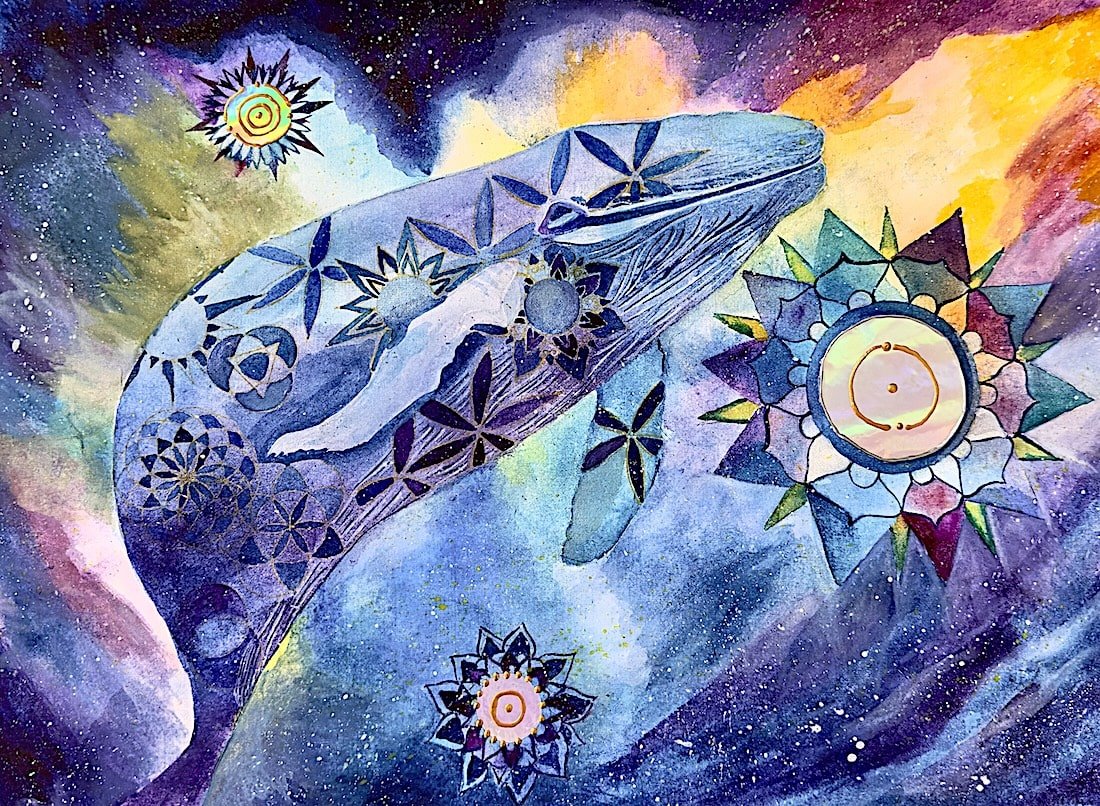
🟥 How would you define a “creative person”?
To me, a creative person is someone who feels deeply. They’re sensitive to beauty, to emotion, to the world around them — often in ways others might overlook. A creative person might even carry past wounds or inner struggles, but they transform those experiences into something meaningful. They often see the world a little differently — sometimes in a way that feels chaotic or unconventional — but that’s where their magic lies. There’s a bit of madness, a bit of mystery, and a lot of heart.
🟥 In your opinion, what are the positive and negative differences between being an artist today and being an artist a century ago?
In my opinion, being an artist today is both easier and more complex than it was a century ago. One major difference is access to inspiration. A hundred years ago, artists often had to search deeply, even struggle, to find meaningful sources of creative energy. Their world was smaller — shaped by personal experience, religion, mythology, or whatever was within reach. Often, their work came from a place of obsession or inner turmoil, and many were driven by intense emotions or even psychological extremes. There was a kind of romantic suffering around the artist’s identity — the idea of being tormented but visionary.
Today, we live in a completely different environment. The access to global culture, spiritual ideas, visuals, and community is vast. We can find inspiration in seconds — from nature, from philosophy, from art history, or even from a stranger on the internet. In that sense, it’s easier. But at the same time, the challenge now is staying true to your voice in a world overflowing with images and influences. Being an artist still requires a certain level of obsession, of sensitivity, of internal fire — but now it also requires clarity, focus, and emotional balance. The art world has changed, and so have we — but the soul of the artist, I believe, is still searching for the same thing: truth, beauty, and meaning.

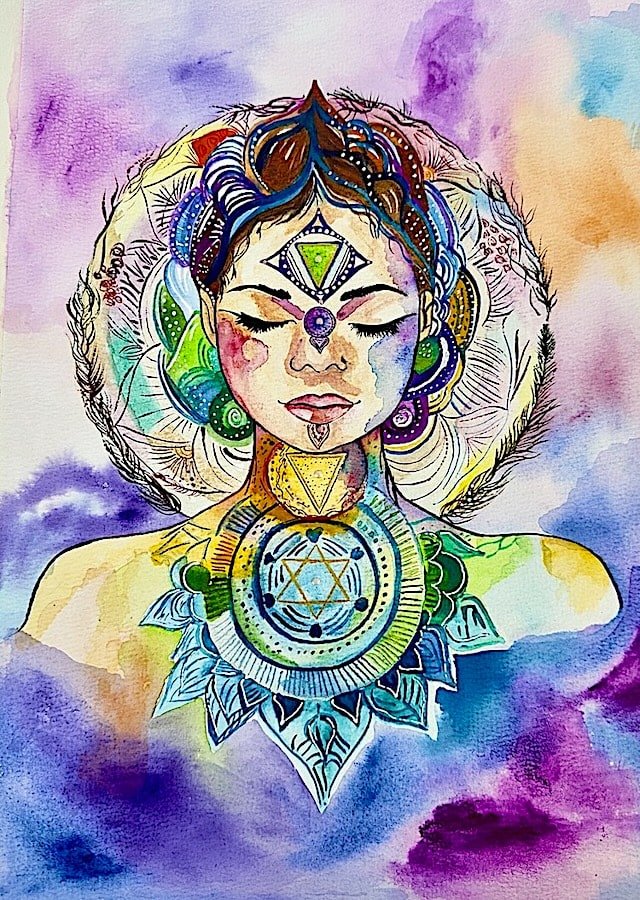
🟥 In your opinion, what are the best and most challenging aspects of being an artist?
In my opinion, the best part of being an artist is the ability to express yourself fully — to speak without words, to capture a moment of emotion or transformation, and to feel that you’ve touched something deeper. Art becomes a form of release, of reflection, of connection to something beyond the ordinary. It’s a space where I can be most honest.
The most challenging part, however, is the risk of not being seen or heard. There is so much visual noise in the world today that your work can feel like a quiet voice in a loud crowd — almost like a scream that gets lost among other screams. You have to find a way to stand out, not just with skill, but with meaning.
Simply creating something beautiful isn’t enough anymore. The real challenge is to wrap your philosophy into your art — to communicate your idea clearly and powerfully. Today, people follow ideas more than technique. In fact, someone who doesn’t even have traditional drawing skills can still surpass everyone if their concept is strong and speaks to the world. That’s the paradox: it’s both freeing and demanding. You have to be a thinker, a communicator, and a visual poet — all at once.
🟥 What advice would you give to aspiring artists who want to build a meaningful career?
Honestly, I feel like I’m still learning just like everyone else. But if I could share something with aspiring artists, it would be this: stay calm and just keep creating. Don’t obsess over whether every piece is a ‘wow.’ Sometimes what feels ordinary to you might deeply move someone else. What matters is consistency and honesty.
Think about your philosophy. Don’t devalue your work or compare yourself constantly. Ask yourself: what is this piece really about? Is it relevant? Is it interesting? Or is it just visually nice? All of that matters. A meaningful career isn’t just built on talent — it’s built on clarity, voice, and presence.
Work on your personal brand. Share your work everywhere you can — online, in exhibitions, on walls, in cafes — flood the space with your voice. But do it mindfully. Keep showing up without always waiting for validation. Find your uniqueness, refine it, and let your art speak your truth. Let it transform as you grow. And never be afraid that someone won’t like it — not everyone needs to. Just stay connected to your reason for creating. That’s where the meaning is.
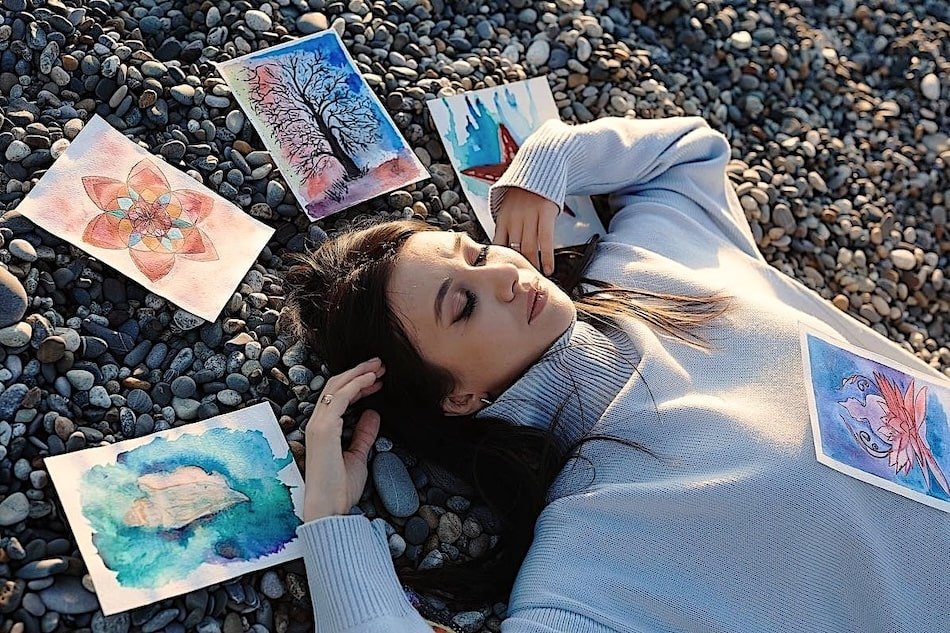
Relevant Links:
Instagram: instagram.com/yuliaramosh
Objkt: objkt.com/users/tz1VRKMQUTCHvYEX3uSAYqUqdCt1EY95NXSr
Twitter: x.com/yuliaramosh/
Skurpy: skurpy.com/user/yuliaramosh
Foundation: foundation.app/@yuliaramosh
Note: The answers given by the artist have been quoted verbatim. There has been no editing. This preserves the artist’s authentic voice for our readers.


